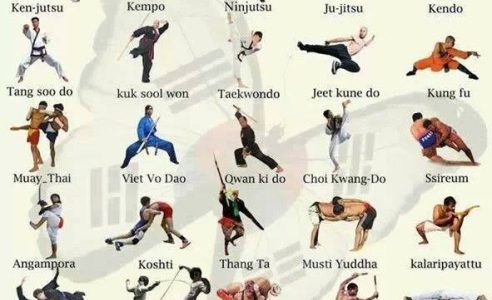How Do Traditional Martial Arts Focus On Discipline Compare To Modern-Day Combat Sporting Activities Focus On Competition? Discover The Vital Distinctions That Can Form Your Trip
How Do Traditional Martial Arts Focus On Discipline Compare To Modern-Day Combat Sporting Activities Focus On Competition? Discover The Vital Distinctions That Can Form Your Trip
Blog Article
Content Writer-Valentine Hovgaard
When you consider martial arts, do you lean extra towards the traditional techniques or the modern fight sports? Each course provides special advantages and experiences, formed by their approaches and training approaches. Conventional martial arts stress personal growth and self-control, while modern-day combat sports concentrate on competition and efficiency. Comprehending these distinctions can guide you in picking the ideal approach for your journey. However how do these differences manifest in training and approach?
The Viewpoint and History Behind Traditional Martial arts
While lots of people connect martial arts with physical fight, the ideology and background behind standard martial arts run much deeper. You'll discover that these self-controls highlight individual development, discipline, and respect.
Originating from ancient techniques, standard martial arts were frequently created for Self-Defense and spiritual growth. They symbolize concepts such as equilibrium, consistency, and self-discipline, leading specialists past simple combating abilities.
As you train, you'll not just discover techniques yet also acquire understandings right into the culture and values that formed these arts. The rituals and customs, typically given through generations, promote a sense of area and belonging.
The Affordable Nature of Modern Battle Sports
Modern combat sports have transformed the landscape of martial arts into a very competitive field, where athletes take on in a test of ability, strategy, and endurance.
You'll observe that competitions are usually organized with stringent rules and policies, guaranteeing fair game and safety. These occasions draw in huge audiences, fueling the enjoyment and strength of matches.
Professional athletes train rigorously, not just for physical prowess yet additionally for psychological toughness, recognizing that every detail counts in the ring. The adrenaline thrill during competitors is palpable, as fighters push their limitations to assert triumph.
Fans value the athleticism and artistry involved, making modern fight sports a thrilling spectacle that remains to advance and astound fanatics worldwide.
Training Techniques and Techniques: A Comparative Analysis
The competitive ambience of contemporary battle sports demands cutting-edge training approaches that vary significantly from typical martial arts.
In contemporary training, you'll concentrate on certain techniques, sparring, and conditioning, often utilizing drills that replicate real fight circumstances. is martial arts good for autism 'll see a focus on quantifiable performance and frequent competition to analyze your skills.
On the other hand, traditional martial arts prioritize kinds, katas, and philosophical teachings, frequently emphasizing discipline and respect over competition.
Training is normally much less intense and might include repeated practice rather than real-time sparring.
While both techniques build skill and health and fitness, modern fight sports offer a more vibrant and adaptable training environment, preparing you for instant obstacles in the ring or cage.
Select the course that lines up with your goals and interests.
Final thought
In selecting between conventional martial arts and contemporary battle sporting activities, it really boils down to what you value the majority of. If you're searching for personal development, discipline, and a feeling of area, standard arts may be your ideal fit. Yet if you flourish on competitors and real-time obstacles, modern battle sporting activities could be the means to go. Eventually, simply click the next web page supply one-of-a-kind benefits, so it's everything about aligning your training with your individual goals and passions.
